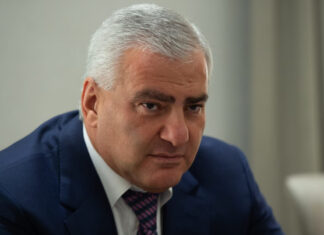By Benyamin Poghosyan
Special to the Mirror-Spectator
On September 13, Azerbaijan launched a new war against Armenia in multiple directions, shelling military and civilian infrastructure and seeking to advance into the Syunik, Vayots Dzor, and Gegharkunik regions. Everyone following the developments in Armenia – Azerbaijan relations expected the escalation; however, the scope of hostilities was unprecedented and went beyond that of the April 2016 four-day war. After two days of active hostilities, Armenia and Azerbaijan reached a ceasefire on September 14. Armenia applied to Russia, the US, France, the UN Security Council, and the Collective Security Treaty Organization (CSTO). The UN Security Council held two meetings on the issue with both closed and open debates, while the CSTO sent a special mission to Armenia to assess the situation and prepare a special report for the heads of CSTO member states. There are conflicting narratives on which state played a decisive role in securing a ceasefire – Russia or the US. However, both were instrumental in seeking to end hostilities. According to Armenian official data, Azerbaijan made significant advances toward Jermuk, the resort city in the Vayots Dzor region, while its success in other directions were quite limited. As of the morning of September 17, Armenia confirmed 135 deaths among its soldiers, stating that the number would grow further. There were casualties among the civilian population too. Azerbaijan confirmed 77 deaths among its armed forces.
What was the reason behind the Azerbaijani decision to start a new war against Armenia? Just two weeks before this latest offensive, Armenian and Azerbaijani leaders met in Brussels to discuss how to move forward toward the signature of a peace treaty between Armenia and Azerbaijan. On August 30, the Armenia-Azerbaijan border delimitation and demarcation commission met in Moscow. Apparently, Azerbaijan was not satisfied with the results of the meeting and decided to punish Armenia and force it to take some steps.
Azerbaijan has two main demands from Armenia — to accept the Azerbaijani position that no Nagorno Karabakh exists anymore and to provide a corridor via the Syunik region to reach Nakhijevan from Azerbaijan proper. Azerbaijan views the realization of the first demand through the signing of the Armenia-Azerbaijan peace treaty with no mention of Nagorno Karabakh. Thus, Azerbaijan does not demand Armenia drop any discussion about the autonomous status of Nagorno Karabakh within Azerbaijan. Baku wants Armenia to explicitly state that there is no territorial administrative unit named Nagorno Karabakh.
The external players involved in the geopolitics of the South Caucasus have different views on this issue. The European Union (EU) and the US support this vision and advise Armenia to sign a peace treaty without mentioning Nagorno Karabakh. They promise to work with Azerbaijan to secure the rights of the Armenian ethnic minority in Azerbaijan afterward and prevent the ethnic cleansing of Armenians. Simultaneously, they promise Armenia to protect its internationally recognized borders from further Azerbaijani attacks. However, the main driver behind this approach is the US and the EU’s intention to push Russian peacekeepers from Nagorno Karabakh after the expiration of their mandate in November 2025. If Armenia agrees that no Nagorno Karabakh exists and establishes peace with Azerbaijan, it will be challenging for Russia to justify the deployment of its troops in Nagorno Karabakh. The US and the EU view the withdrawal of Russian peacekeepers from Nagorno Karabakh as a necessary step toward decreasing Russian influence in the South Caucasus, which is a strategic priority for them given Russia–West ongoing war.








